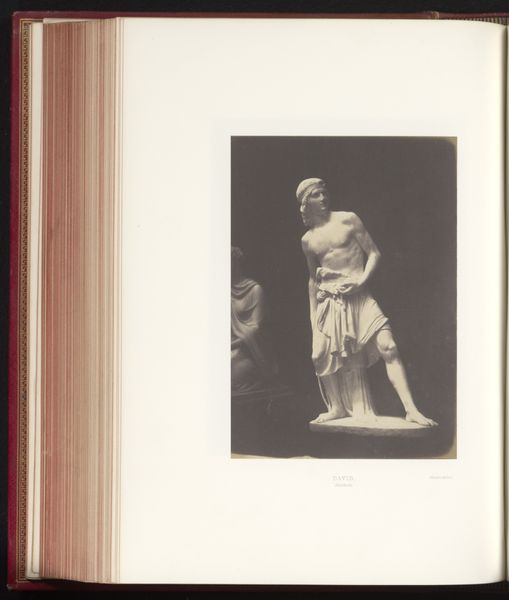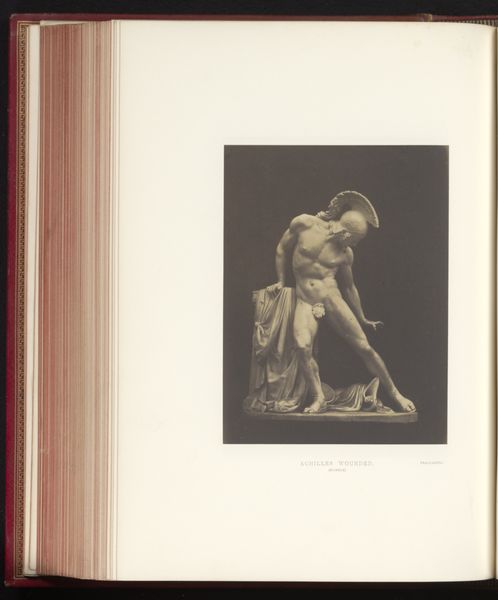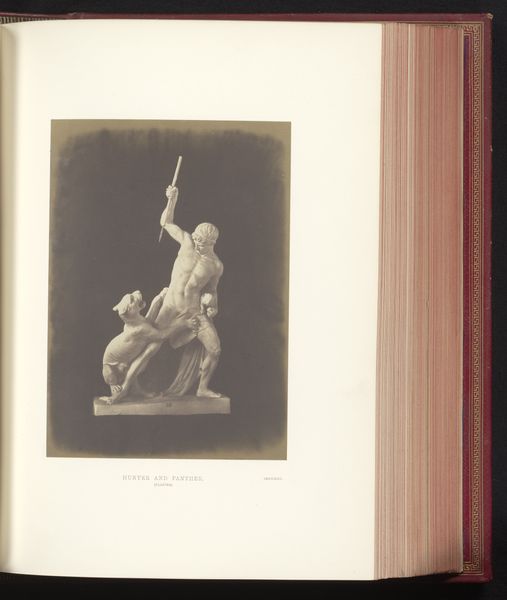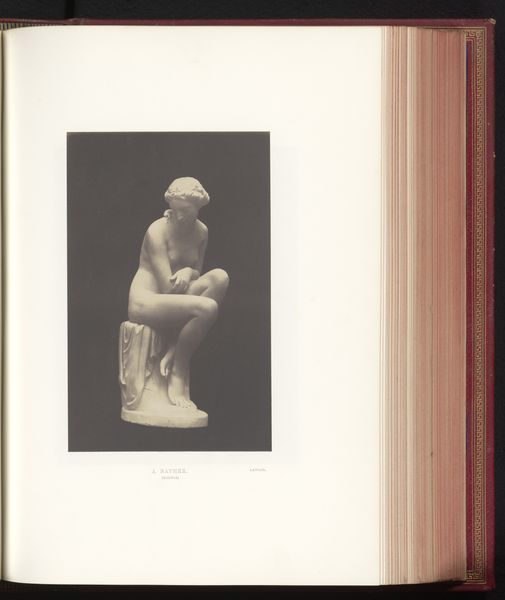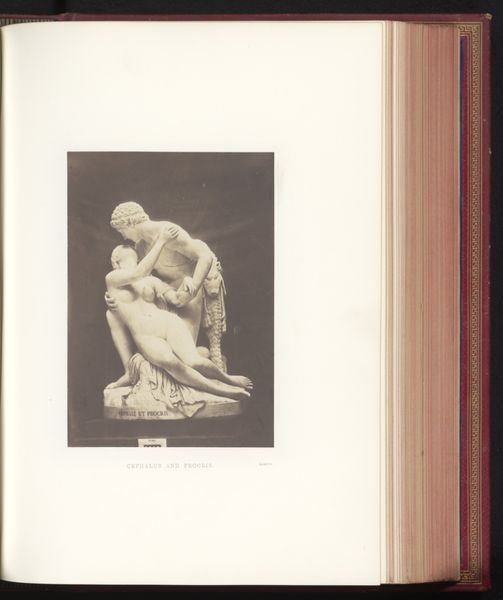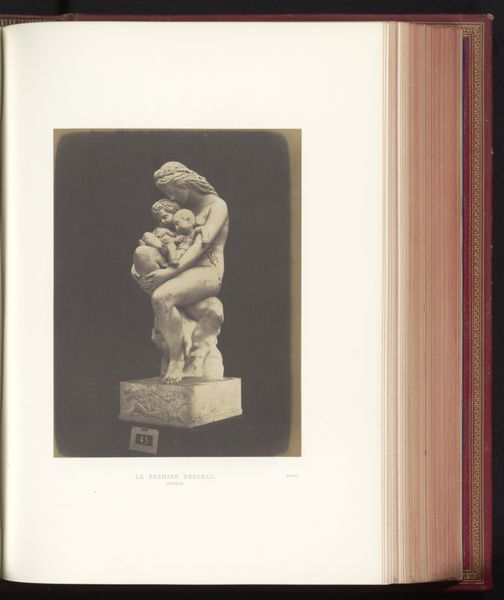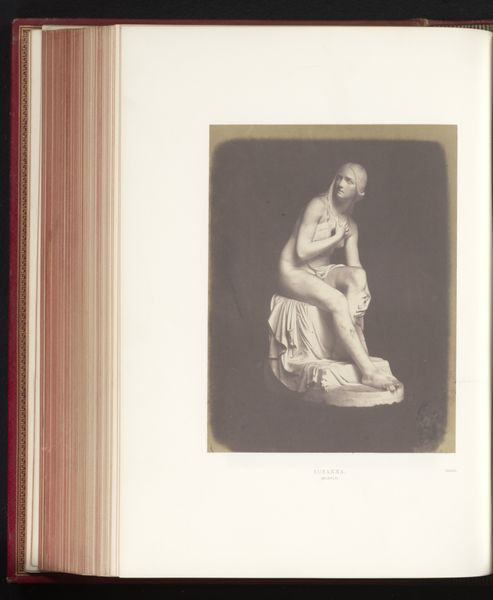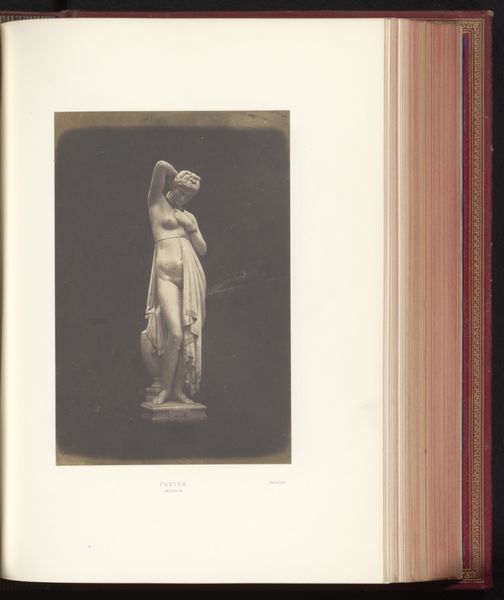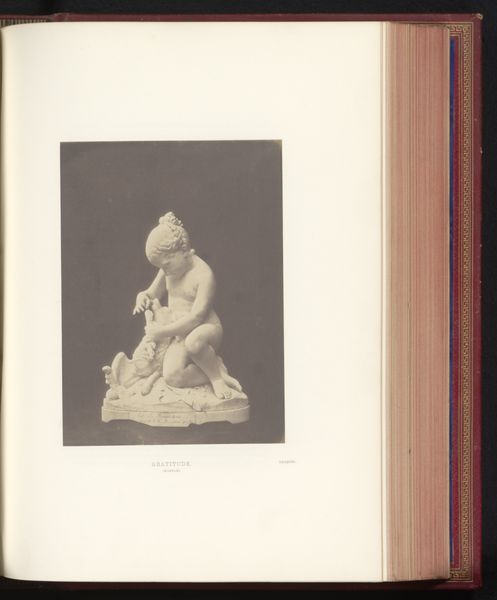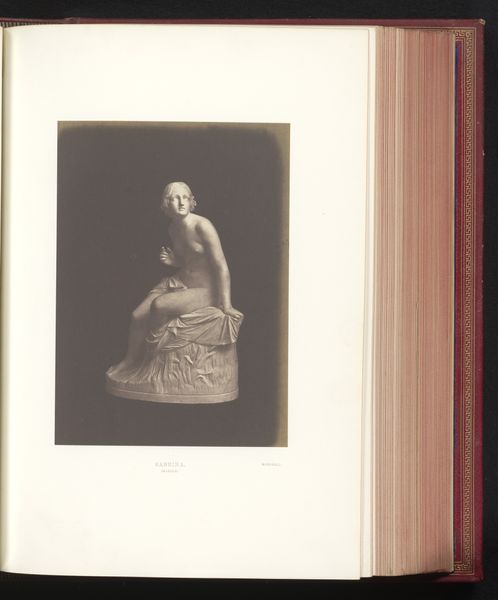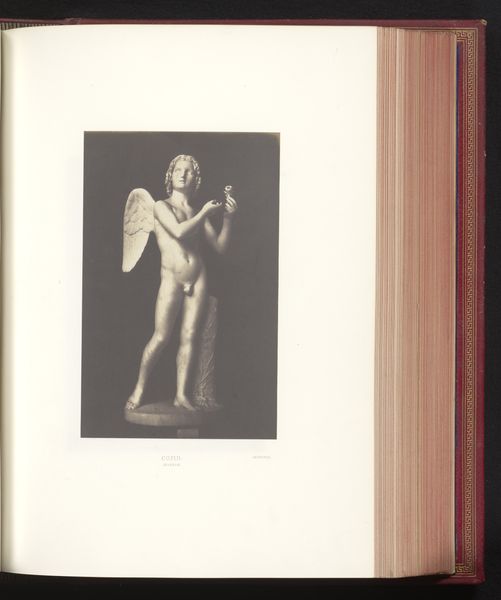
Sculptuur door John Henry Foley, voorstellend een jonge man bij een rivier, tentoongesteld op de Great Exhibition of the Works of Industry of All Nations van 1851 in Londen 1851
0:00
0:00
bronze, photography, sculpture
#
portrait
#
neoclacissism
#
bronze
#
photography
#
sculpture
#
nude
#
realism
Dimensions: height 207 mm, width 151 mm
Copyright: Rijks Museum: Open Domain
Curator: Let's talk about this photograph depicting John Henry Foley's bronze sculpture, dating back to 1851. It's titled "Sculpture by John Henry Foley, Depicting a Young Man by a River." The statue itself was showcased at The Great Exhibition. What's your initial take? Editor: There's a starkness, isn't there? A poised nudity that clashes delightfully with the implied grandiosity of "The Great Exhibition." It's classically beautiful, undeniably, but the photograph somehow amplifies the figure's vulnerability. Curator: Exactly. The sculpture leans heavily into Neoclassicism. I’m captivated by how Foley marries realism with idealized forms. And to consider it exhibited amongst the marvels of industry… It throws its classicism into such stark relief! The materiality is paramount. What kind of labor went into this sculpture? Who benefits? And how does that reverberate even into our photograph of it. Editor: It is definitely asking a lot of labor for the production, I mean we see a photograph of it. It makes you question photography as labor or if photography obscures all that backbreaking creation? Thinking of all those invisible bronze workers. And of course the politics. This was *the* exhibition to celebrate capitalist achievement… It would have certainly affirmed and demonstrated British superiority at that time! Curator: Precisely. But let's circle back to the youth by the river. There's a potent symbolism at play. Foley is clearly referencing classical ideals of beauty and the idealized human form, presenting them as inherently British through sheer artistic ownership. I get the sense that something darker is bubbling under its surface! What do you think, did Foley feel this push to claim history or ownership? Editor: I see a studied grace, almost contrived – especially when juxtaposed against that river, or the idea of one. It all seems very controlled. Yet, what remains quite wonderful, the sheen, weight, all that tactility captured. The actual work versus its perfect, static depiction. It also speaks volumes about Victorian society's conflicted relationship with the nude. The photograph itself becomes a document, a trace of labor, material transformation. Curator: It definitely does. Ultimately, it becomes hard to forget how the bronze sculpture—a celebration of ideal form—required toil. Editor: Yes, that nexus of aesthetics, materials and social force—it is, truly, the stuff of life, and great art.
Comments
No comments
Be the first to comment and join the conversation on the ultimate creative platform.
